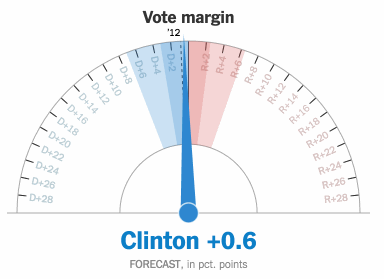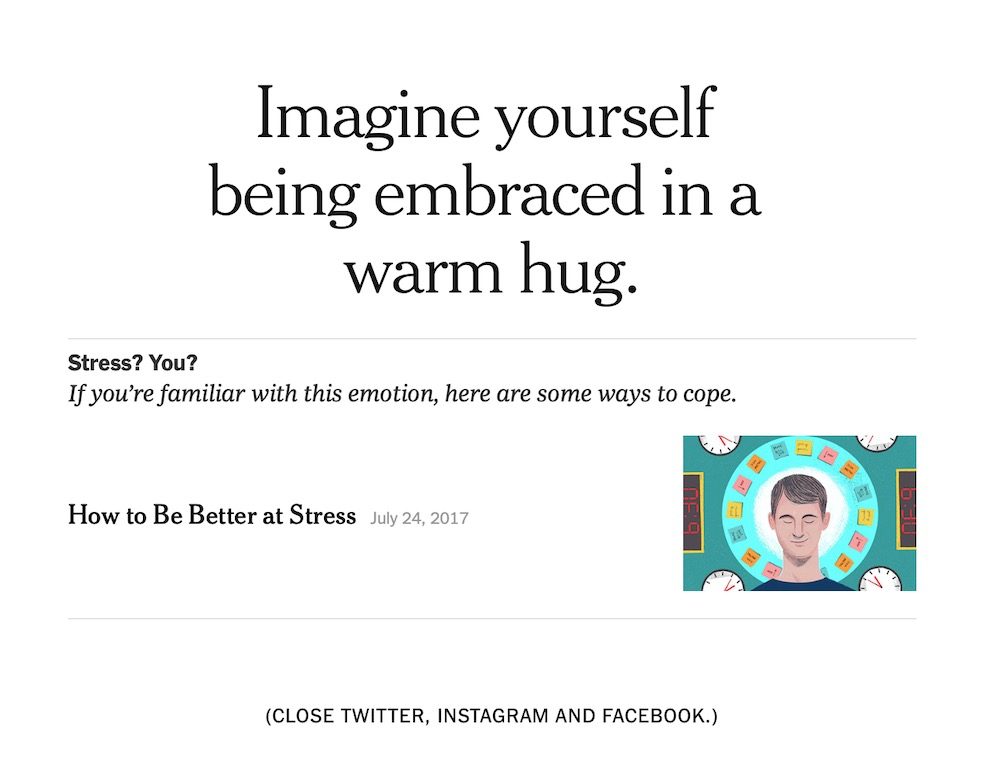
If Election 2018 has had a Word of the Year, it might be “bothsidesism,” a second cousin to “whataboutism” and au courant rhetorical weapon against those who treat two disparate phenomena as being of comparable importance. (Broadly speaking, whataboutism is a disease native to cable news pundits, while bothsidesism primarily infects newspaper writers.)
But Election Day has brought the ultimate in bothsidesism from — of course! — The New York Times. Tonight, the paper will drive millions of nervous tappers and clickers insane by bringing back 2016’s bête noire, THE NEEDLE.

See, you’re tensing up just looking at it, aren’t you?
Meanwhile, in typical MSM form, The New York Times is trying to have it both ways by allegedly offering “The Calm Place,” a page on the Internet where “Election” is just that Reese Witherspoon movie.






It even has /self-care/ in the URL.
It encourages you to share it with your stressed friends lol:

Really, you can learn all you need to know about The Calm Place from the stock photo credits.
CREDIT: SHUTTERSTOCK (GRASS, CANDLE, ROCKS, ORANGES, DOG, HANDS, VAPOR)
SO WHICH IS IT NEW YORK TIMES?!?! Do you want hours of white-knuckled existential panic or do you want us to center our qi?
Please PLEASE go pet this emotional support good boy or else he DIES –> https://t.co/rweDQOcO85 pic.twitter.com/ygyH2BuSIN
— tracy ma (@tracy_ma) November 5, 2018
the byline on this is “The Styles Desk” but it is obviously herrman https://t.co/jRSFa5t7e3
— brian feldman (@bafeldman) November 5, 2018
HAHAHAHA OMG GOOD ONE
"Congratulations, you have achieved lasting inner peace." https://t.co/AVvRmPZVzt— Jaime Swanson (@Jaime_Elizabeth) November 6, 2018
Me on Election Day 2016 vs. Me on #ElectionDay 2018 https://t.co/7ee2F20yxB pic.twitter.com/VkZW5N1tZv
— Molly Fisch-Friedman (@mhf2016) November 6, 2018
Why am I paying for therapy when this exists? (h/t @mccullarmebad) https://t.co/nTPrCBJ54R
— Abby Johnston (@ajohnston12) November 6, 2018